Deep within Earth’s most secluded caverns, where sunlight never penetrates and darkness reigns supreme, a remarkable reptile has evolved to thrive in conditions that would challenge most vertebrates. The olm (Proteus anguinus), often called the “human fish” or “cave salamander,” isn’t a snake but represents one of nature’s most fascinating examples of cave adaptation. These slender, pale creatures have developed extraordinary abilities that allow them to navigate and survive in the perpetual darkness of underground cave systems. Their story illustrates the incredible adaptability of life and the specialized evolutionary paths that can emerge in extreme environments. Join us as we explore how these remarkable animals have conquered the challenges of subterranean existence, developing unique sensory capabilities and survival strategies that have allowed them to become masters of their lightless domain.
The Olm: Europe’s Cave-Dwelling Marvel
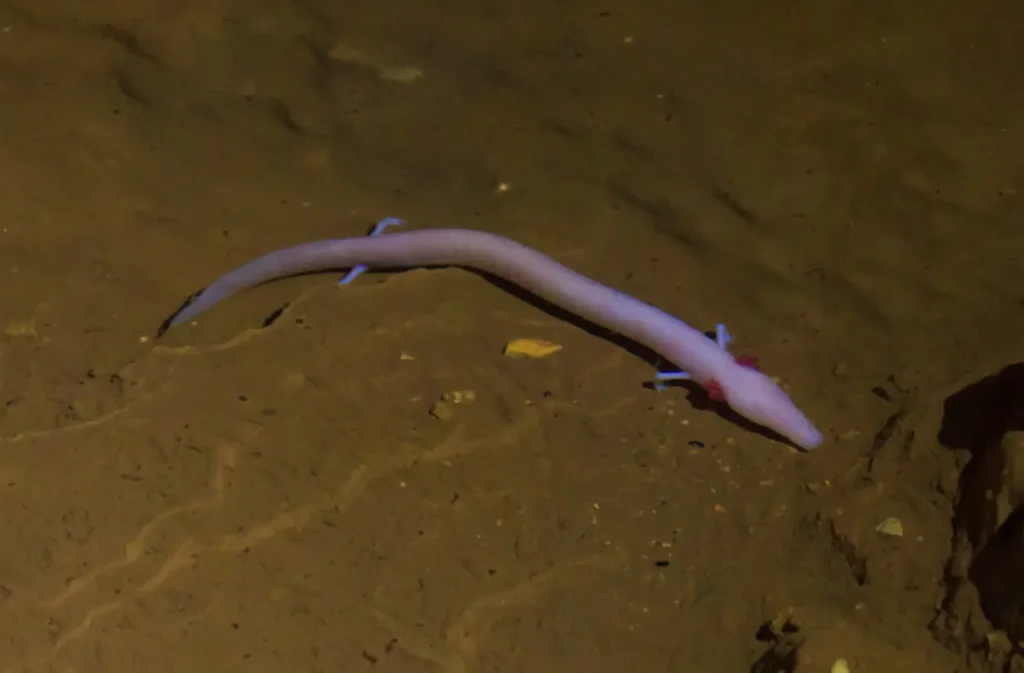
The olm (Proteus anguinus) represents one of Europe’s most extraordinary cave-dwelling animals, found primarily in the underground waters of the Dinaric Alps stretching through Slovenia, Croatia, Bosnia and Herzegovina, and Herzegovina. Despite its snake-like appearance, the olm is an aquatic salamander belonging to the amphibian family Proteidae. These remarkable creatures can grow to about 25-30 centimeters (10-12 inches) in length, with elongated, cylindrical bodies that have evolved specifically for life in underwater cave environments. Their pale, pinkish-white skin lacks pigmentation—a common adaptation among cave-dwelling animals who have no need for protective coloration in their pitch-black habitats. Olms are considered extremely rare and valuable from a biological perspective, representing one of the few vertebrate species fully adapted to complete darkness.
Evolutionary History in the Darkness
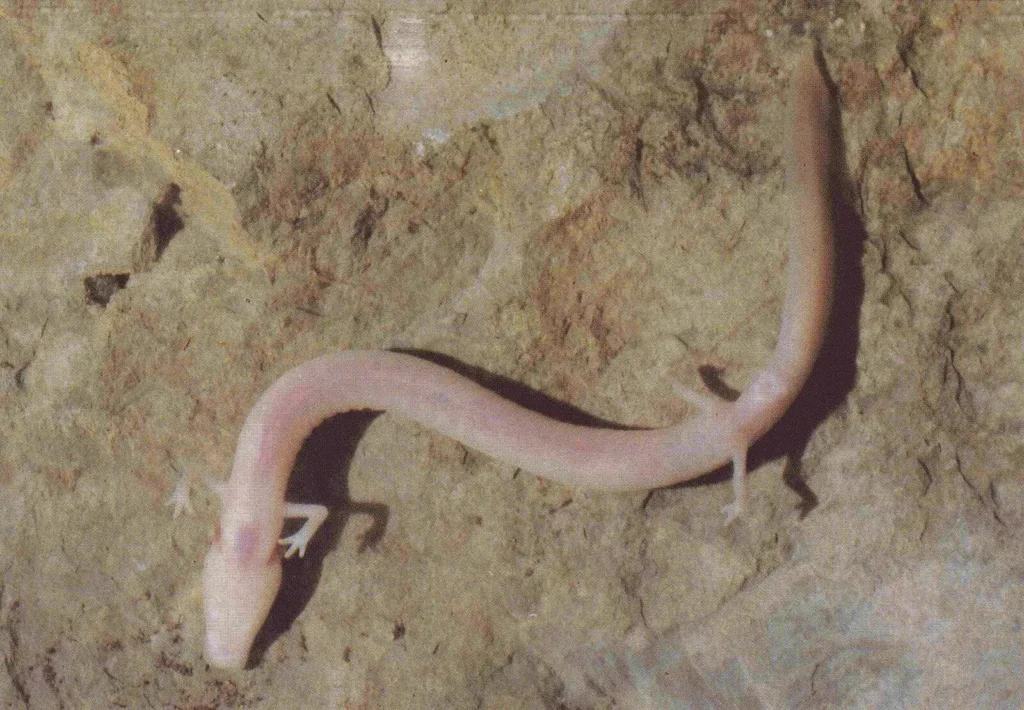
The evolutionary journey of the olm began approximately 20 million years ago when their ancestors likely inhabited surface waters but gradually adapted to underground environments as the Dinaric karst region formed. These amphibians became increasingly specialized for subterranean life as they became isolated in cave systems, developing their unique traits through the process of regressive evolution, where features unnecessary for cave life are reduced or lost. Fossil evidence suggests that olms have remained remarkably unchanged for millions of years, earning them the status of a living fossil among biologists. Their persistence through significant geological periods demonstrates the stability of cave environments as protective habitats during times of external environmental change. The olm’s evolutionary path represents one of the most dramatic examples of adaptation to extreme habitat specialization among vertebrates.
Physical Adaptations for Cave Life
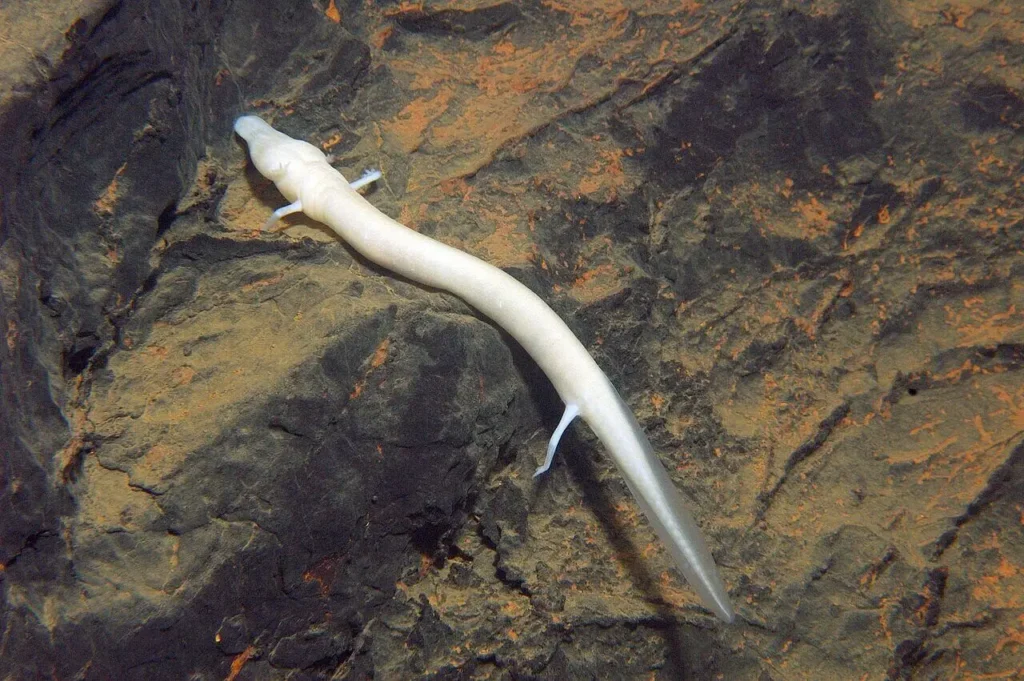
The olm displays remarkable physical adaptations that perfectly suit its lightless underground habitat. Perhaps most notably, these creatures possess underdeveloped, non-functional eyes that become covered by skin as they mature—a clear example of regressive evolution in response to an environment where vision serves no purpose. Their skin lacks pigmentation, giving them their ghostly appearance, but it contains specialized sensory cells that can detect light despite their functional blindness. The olm’s elongated body and reduced limbs facilitate movement through narrow underwater passages in cave systems. Their external gills, bright red and feathery, remain throughout their lives—an example of neoteny, where larval features are retained into adulthood. This suite of physical adaptations demonstrates how completely the olm has evolved to match the specific challenges of perpetual darkness.
Enhanced Senses: Navigating Without Light
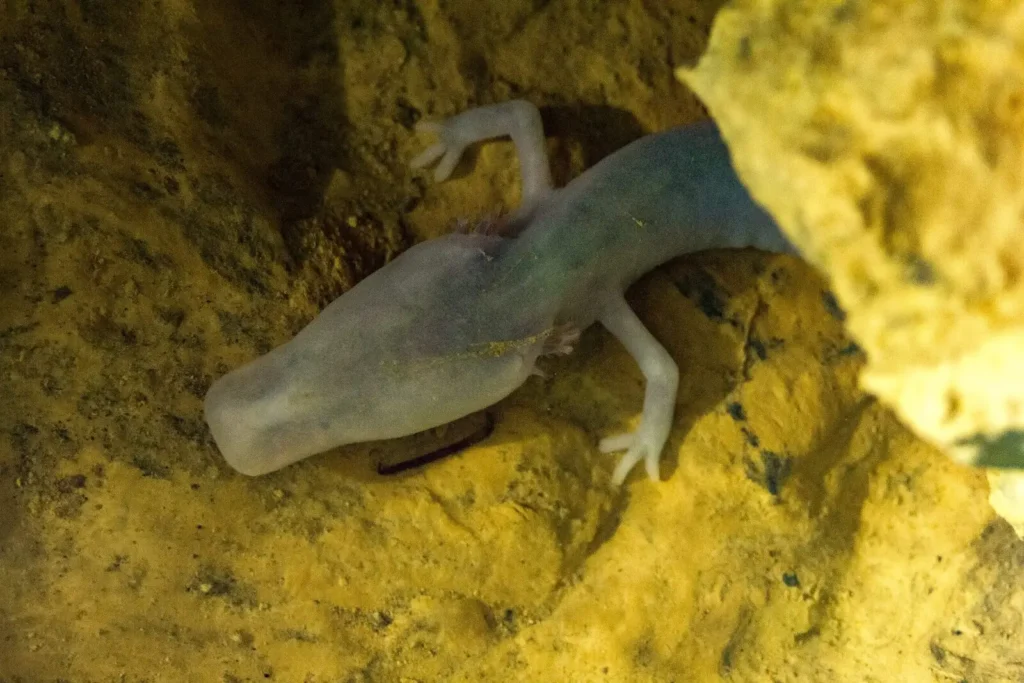
To compensate for their lack of functional vision, olms have developed extraordinarily heightened alternative senses that allow them to navigate and hunt effectively in complete darkness. Their sense of smell is exceptional, with enlarged olfactory bulbs that can detect minute chemical signals in the water, helping them locate prey and potential mates. Olms possess an acute sense of hearing, capable of detecting subtle vibrations and sounds traveling through water, which proves invaluable for identifying approaching predators or prey movements. Perhaps most remarkably, these creatures have developed specialized sensory organs called ampullary organs that can detect weak electric fields—a sense called electroreception that allows them to locate prey even when other sensory information is limited. Additionally, they can sense the Earth’s magnetic field, potentially aiding in orientation within the complex three-dimensional maze of their cave habitats.
Metabolic Marvels: Survival in Resource-Poor Environments
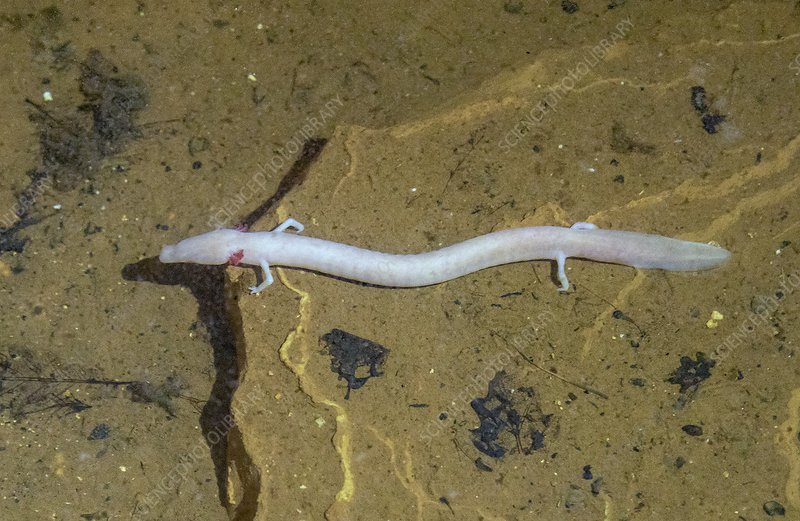
The olm has evolved an exceptionally slow metabolism that perfectly matches the resource-scarce environment of cave systems, where food is often limited and unpredictably available. Scientific studies have documented olms surviving without food for remarkable periods—up to a decade in some cases—by drastically slowing their metabolic processes and utilizing stored fat reserves with extraordinary efficiency. Their heart rate can drop to just a few beats per minute during periods of inactivity, conserving energy until feeding opportunities arise. The olm’s slow growth rate and delayed sexual maturity—taking up to 15 years to reach reproductive age—further reflect their adaptation to environments where energy conservation is paramount. These metabolic adaptations represent some of the most extreme efficiency mechanisms known among vertebrates and explain how olms can persist in environments that would starve most other animals.
Reproduction in the Darkness
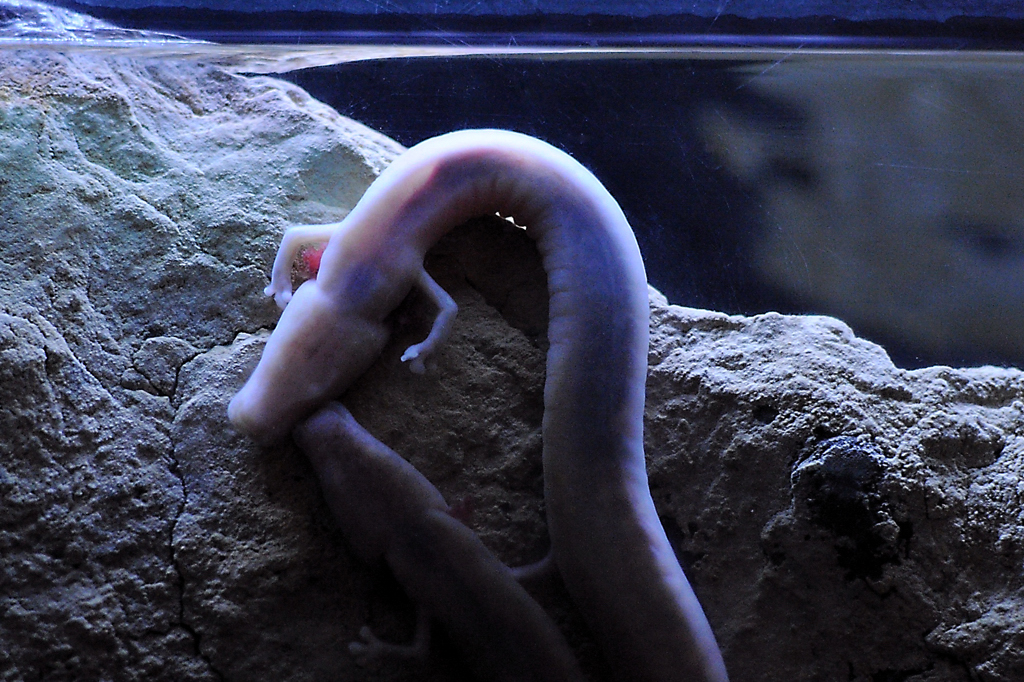
The reproductive strategy of the olm is as specialized as the rest of its biology, with adaptations specifically suited for their isolated, resource-limited cave habitats. Female olms typically lay only 35-70 eggs every 12.5 years on average—one of the longest reproductive cycles documented among amphibians—a strategy that conserves energy in their resource-poor environment. The eggs are typically attached to the undersides of submerged rocks, where the female will guard them for the initial development period of approximately two to three months. Once hatched, the young olms are essentially a miniature versions of the adult, already adapted for cave life without needing to undergo dramatic metamorphosis. Scientists have determined that olm can live for extraordinary lifespans of up to 100 years or more, a longevity that compensates for their infrequent reproduction and helps maintain stable population numbers despite their challenging habitat.
Diet and Hunting Strategies
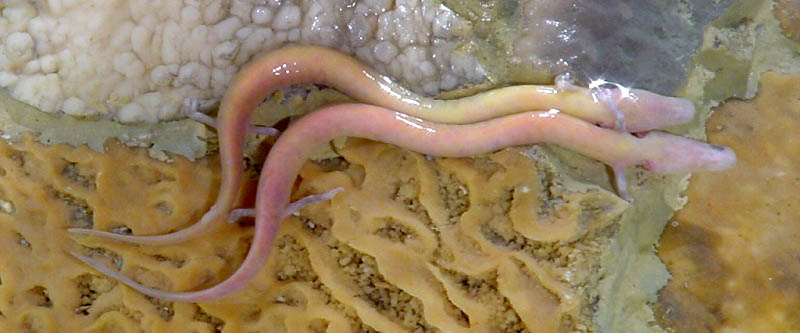
Despite living in environments with limited food resources, olms have developed effective hunting strategies that allow them to capture what prey is available in cave systems. They primarily feed on small crustaceans, insect larvae, snails, and other invertebrates that inhabit underground water systems. Without relying on vision, olms use their enhanced senses of smell, hearing, and electroreception to detect and locate prey, often sensing the electrical fields generated by the muscle movements of potential food items. When hunting, they move slowly and deliberately through the water, conserving energy until prey is detected within striking distance. Once prey is located, olms can strike with surprising speed, using their small but sharp teeth to capture food items. Their ability to survive long periods without feeding means they don’t need to hunt continuously, instead capitalizing on feeding opportunities when they arise.
Conservation Status and Threats
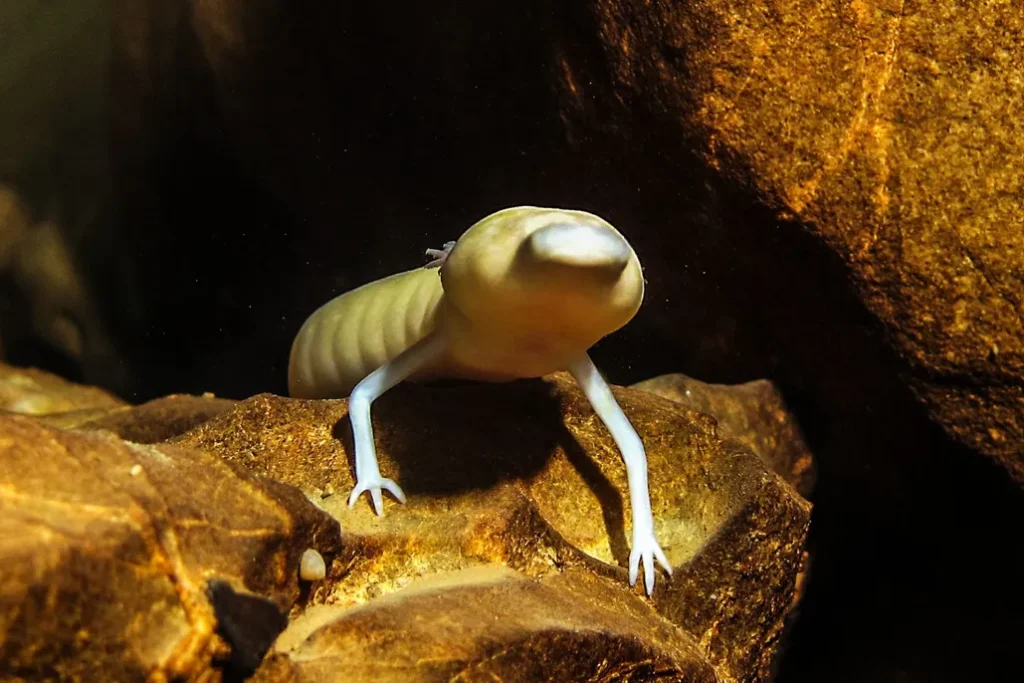
The olm holds a vulnerable conservation status according to the International Union for Conservation of Nature (IUCN), facing multiple threats despite the seeming protection of their isolated cave habitats. Water pollution from agricultural runoff, industrial waste, and improper disposal of household chemicals represents the most significant danger, as contaminants can easily enter the karst systems and spread through the underground water networks where olms live. Habitat modification through infrastructure development, particularly damming projects that alter water flow patterns in cave systems, has disrupted populations in some regions. Climate change poses an emerging threat, as altered precipitation patterns affect groundwater levels and chemistry in cave systems. The slow reproductive rate of olms makes their populations particularly vulnerable to these threats, as they cannot quickly recover from population declines through rapid reproduction.
Cultural Significance and Historical Perception
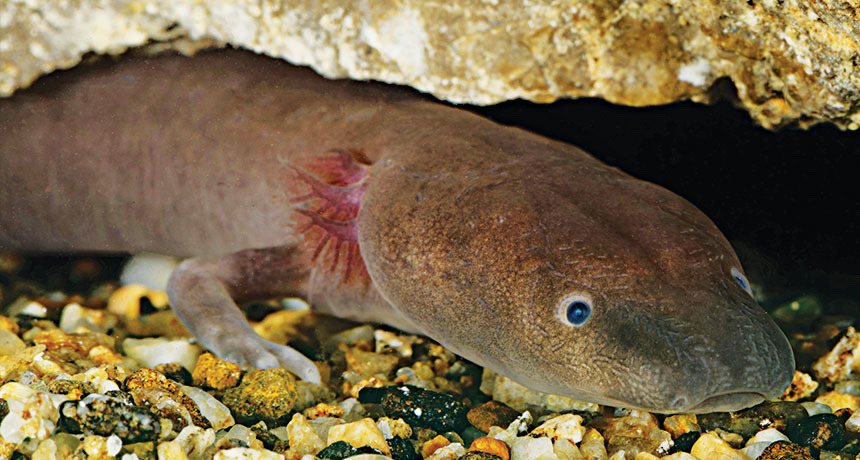
Throughout history, the mysterious olm has captured human imagination and featured prominently in European folklore and cultural narratives. Local legends once described these pale, mysterious creatures as “baby dragons,” with their unexpected appearances during flooding events interpreted as mythical omens. In Slovenia, where some of the largest olm populations exist, these creatures have become a national symbol and appear on coins and in tourist promotions. The first scientific description of the olm came in 1768 from naturalist Josephus Nicolaus Laurenti, but these animals remained shrouded in mystery for centuries, their unusual biology confounding early researchers. Today, the olm serves as an important symbol for cave conservation efforts across Europe, helping raise awareness about the fragility and importance of subterranean ecosystems that remain largely hidden from human view.
Scientific Research and Discoveries

The olm continues to fascinate scientists, who view these specialized cave-dwellers as valuable models for understanding extreme adaptation, regressive evolution, and sensory biology. Recent genetic research has revealed that olm populations show surprising diversity despite their visual similarity, with distinct genetic lineages suggesting they may comprise several cryptic species that appear identical but are genetically different. Pioneering studies on their sensory capabilities have provided insights into how vertebrates can develop alternative perception systems when vision is lost. Advances in captive breeding techniques have allowed researchers to observe their full life cycle and reproductive behaviors, previously difficult to document in their natural cave habitats. Perhaps most intriguingly, ongoing research into the olm’s regenerative abilities—they can regrow damaged limbs and recover from significant injuries—may have applications for human medicine, particularly in the field of regenerative therapies.
The Black Olm: A Rare Variant
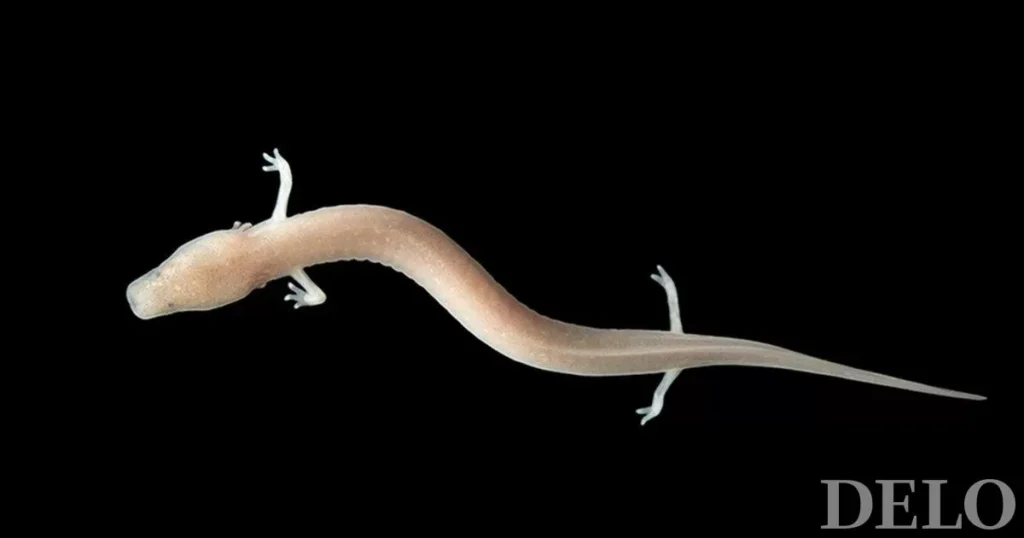
While most olms species display the characteristic pale, pinkish-white coloration, a rare pigmented subspecies known as the black olm (Proteus anguinus parkelj) exists in a limited region of southeastern Slovenia. Discovered only in 1986, these dark-colored variants represent a fascinating evolutionary divergence, retaining some pigmentation unlike their more widespread pale relatives. The black olm has slightly more developed eyes than the common olm, suggesting they may have colonized underground habitats more recently in evolutionary terms. Their extremely limited distribution—found in just a handful of caves in the Bela Krajina region—makes them particularly vulnerable to environmental threats. Scientists believe studying the differences between black and white olm populations could provide valuable insights into the timeline and mechanisms of cave adaptation, potentially revealing how quickly evolutionary changes can occur in response to subterranean environments.
Visiting Olm Habitats: Conservation Tourism
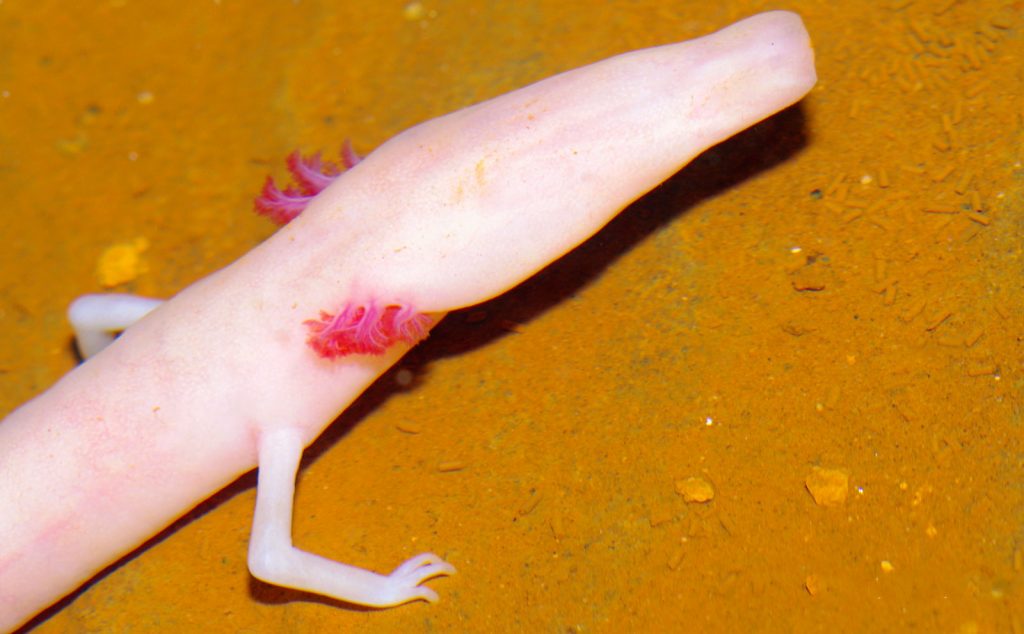
For those interested in observing these remarkable cave-dwelling creatures, several managed tourist caves in Slovenia and Croatia offer opportunities to glimpse olms in their natural habitat while supporting conservation efforts. The famous Postojna Cave in Slovenia maintains a carefully monitored vivarium where visitors can observe olms while learning about their biology and conservation needs. Responsible cave tourism provides crucial funding for protection efforts while raising awareness about these unique animals and their fragile ecosystems. Strict protocols are enforced in tourist caves to minimize human impact, including limited visitor numbers, designated pathways, and prohibition of flash photography, which could stress the light-sensitive olms. Conservation-focused tour operators often partner with scientific institutions, contributing data and support to ongoing research and monitoring programs that track olm populations and habitat conditions.
Future Prospects and Conservation Efforts

The future of the olm depends largely on coordinated conservation efforts across the countries where they occur, with recent initiatives showing promising developments for their protection. The European Union’s Natura 2000 program has designated key olm habitats as protected areas, imposing stricter regulations on activities that might impact water quality or cave environments. Captive breeding programs have been established as insurance populations, particularly for the critically endangered black olm subspecies, though replicating their specialized cave environment remains challenging. Ongoing water quality monitoring programs throughout the Dinaric karst region help identify pollution threats before they can devastate olm populations. Public education campaigns have successfully raised awareness about these animals, reducing instances of casual cave pollution and generating support for conservation legislation. Despite these positive steps, continued vigilance remains essential as underground ecosystems face increasing pressures from human development and climate change.
The olm stands as a testament to life’s remarkable adaptability, having evolved specialized traits that transform the challenges of perpetual darkness into a successful survival strategy. From their exceptional sensory capabilities to their remarkably efficient metabolism, these cave-dwelling amphibians represent one of nature’s most specialized evolutionary paths. As we continue to study and protect these unique creatures, they offer valuable lessons about adaptation, evolution, and resilience in extreme environments. The story of the olm reminds us that even in Earth’s most seemingly inhospitable corners, life finds extraordinary ways to not just survive, but thrive, developing specialized traits and behaviors perfectly matched to the challenges at hand. In preserving these remarkable animals and their habitats, we protect not just a biological marvel but a window into the remarkable adaptability that characterizes life on our planet.




